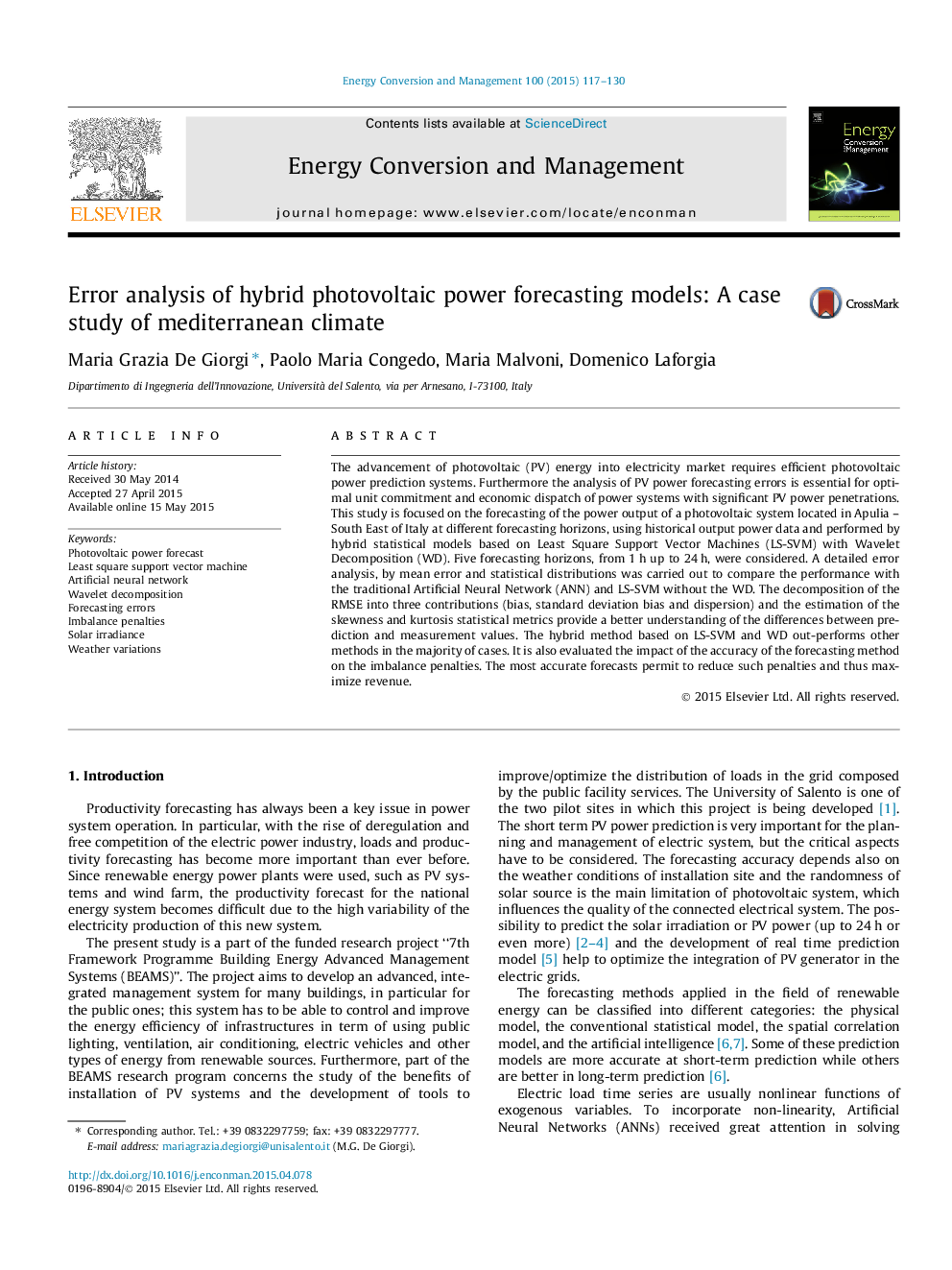| کد مقاله | کد نشریه | سال انتشار | مقاله انگلیسی | نسخه تمام متن |
|---|---|---|---|---|
| 763701 | 1462862 | 2015 | 14 صفحه PDF | دانلود رایگان |
• Hybrid statistical models were implemented for photovoltaic power forecast.
• Artificial Neural Networks and Least Square Support Vector Machines are compared.
• A deep error analysis is carried out to evaluate the forecasting performance.
• Imbalance penalties were evaluated for the different prediction methods.
• LS-SVM with Wavelet Decomposition (WD) outperforms ANN method.
The advancement of photovoltaic (PV) energy into electricity market requires efficient photovoltaic power prediction systems. Furthermore the analysis of PV power forecasting errors is essential for optimal unit commitment and economic dispatch of power systems with significant PV power penetrations. This study is focused on the forecasting of the power output of a photovoltaic system located in Apulia – South East of Italy at different forecasting horizons, using historical output power data and performed by hybrid statistical models based on Least Square Support Vector Machines (LS-SVM) with Wavelet Decomposition (WD). Five forecasting horizons, from 1 h up to 24 h, were considered. A detailed error analysis, by mean error and statistical distributions was carried out to compare the performance with the traditional Artificial Neural Network (ANN) and LS-SVM without the WD. The decomposition of the RMSE into three contributions (bias, standard deviation bias and dispersion) and the estimation of the skewness and kurtosis statistical metrics provide a better understanding of the differences between prediction and measurement values. The hybrid method based on LS-SVM and WD out-performs other methods in the majority of cases. It is also evaluated the impact of the accuracy of the forecasting method on the imbalance penalties. The most accurate forecasts permit to reduce such penalties and thus maximize revenue.
Journal: Energy Conversion and Management - Volume 100, August 2015, Pages 117–130
